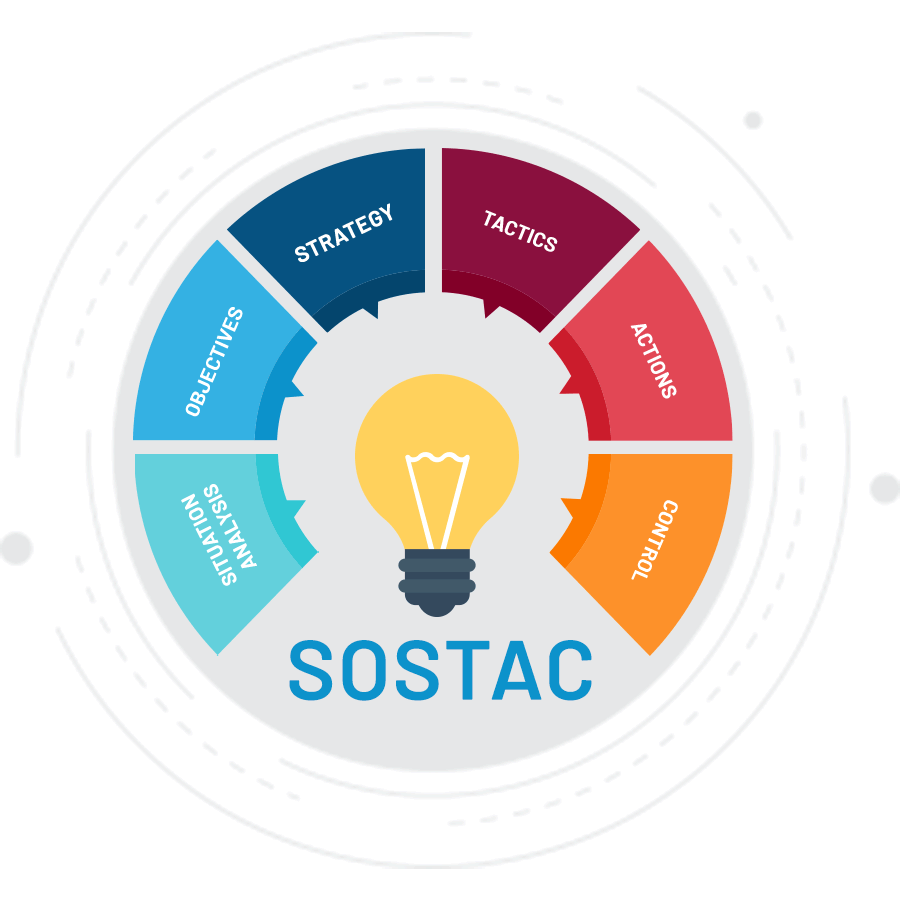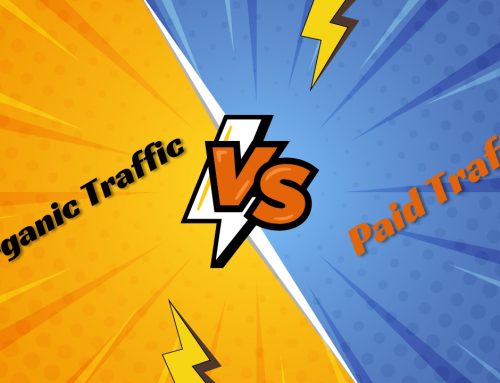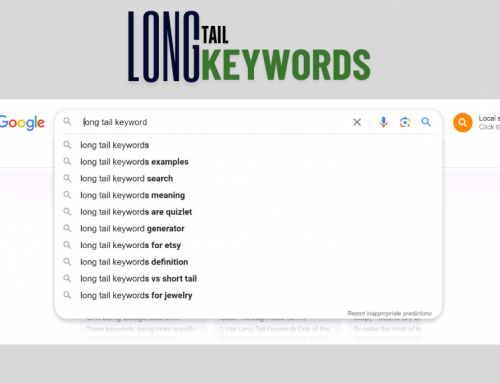It may seem obvious, but first we will explain the word model because this explanation saves us from future problems and misunderstandings. The model in our discussion is actually a small example of a concept that we use to simulate. The model is like a map. Any model may be incomplete and in places far from reality! We do not have a complete model, and this is not a problem. The important thing is that the model is useful and works.
What are marketing models?
These models are designed to model the market and make marketing and sales easier. That is why so many marketing models have been introduced in the marketing world. Some are outdated and some have been updated. Using the marketing model, you can design a marketing strategy and present a marketing plan. Of course, it is not so easy! In this way, you need accurate data about your status, competitors and even the future. You need to know your business model and the community space of your audience.
Some models are suitable for small and medium enterprises (SMEs) or startups, some are suitable for large companies or enterprises, and some like SOSTAC can be implemented everywhere. . The STP model can be used for startups and SMEs, and the RACE model is suitable for large companies
What is the difference between digital marketing models and marketing models?
Because digital marketing is only named in tools and glamor! It is different from marketing, in principle, marketing models can be used in digital marketing and only considerations should be taken about digital media. But in particular, the SOSTAC model has been introduced as a model for digital marketing.
What is the SOSTAC model?
The SOSTAC model is one of the most popular models among digital marketers. According to a survey conducted by the Chartered Institute of Marketing, this model has won the title of the third most popular model among 12 famous models. The SOSTAC model was developed by PR Smith, who developed it in the 1990s and published it in 2004 in Strategic Marketing Communication. The SOSTAC model can be used both as a macro in marketing strategy and in a smaller way to improve your SEO or email marketing tactics.
Sastek stands for 6 words and is one of the basic principles of marketing. In fact, if we want to say the SOSTAC model at a glance, we must name the following 6 steps:
- Situation: Where are we in the market now?
- Objectives: Where do we want to be?
- Strategy: How can we get there?
- Tactics: Exactly how can we get there?
- Action: What is our plan?
- Control: Did we get there?
SOSTAC model says about this:
- Use SOSTAC to check the whole process.
Before we look at how to implement the SOSTAC steps in developing a marketing plan, my first point is to use it to review your processes.
Identify activities that you and your organization are good at. You may spend too little or too little time reviewing your marketing processes. You may not do well in setting your SMART goals or development strategies. - Balance between different SOSTAC steps.
You may spend a lot of time analyzing and not leaving enough time for strategy. As a general formula, the balance between the contents should be:
S) 20%)
O) 5%)
S) 45%)
T) 30%) - Summarize your status with the TOWs matrix form from SWOT
To keep the focus on analyzing your status, I recommend using TOWs. This helps to combine SWOT with strategy. - SMART your goals and connect them to your analysis and control process
because digital marketing is fully measurable to achieve your goals by precisely setting goals and drawing a funnel. But do not neglect the 5Ss model in choosing goals. - Combine the various elements of your SWOT
To make the various parts of a program more productive, I recommend summarizing your entire SOSTAC-based plan in a table like the one below.
|
Short Term Objectives |
Achieving goals |
Strategies to achieve long-term goals ( Goals ) |
Vital Signs of Success (KPIs) |
|
1- Achieving goals Attract 50,000 new customers online for this year, with a CPA or an average cost of attracting $300 and an average profitability of 5% per customer |
Estimated growth based on current sales of 40,000 per year, but with a gradual increase in the share of the new sales and SEO collaboration program |
Start a sales and SEO collaboration program. Use a combination of existing media based on click-through payment and offline media ads |
The total cost of attracting each customer to online sales. Number and percentage of sales resulting from sales cooperation. The number of strategic keywords targeted organic traffic that rank well on the Google search results page |
|
2- Absorption (or conversion) Migrate 40% of existing customers to use online payment services and email communication within 3 years |
Estimate current migration with increased uptake from offline direct marketing campaign |
Direct marketing campaign using email, phone call, online persuasion to attract people. Utilizing stimuli to bring about change |
Number or percentage of customers who have registered to use the online service. Number or percentage of customers who actively use online services as soon as they register. |
|
Bringing the average purchase of each customer to 42 thousand dollars per customer |
Growth estimate based on AOV or current average value of each order (35 thousand Tomans) plus 20% bid increase |
Use of new systems to offer sales to users to buy similar products (cross-selling) in each product category |
Percentage of site visitors who have responded to supplement purchase offer messages |
Six steps of SOSTAC marketing model
first stage:
Situation analysis in the SOSTAC model
At this stage, you must specify the status and general profile of the organization. Who are you? what are you doing? And how do you do online business by addressing the internal and external factors that affect your business?
To draw a clear picture of your organization at this stage, you must use the following methods:
- Who are your current digital customers? (How they interact with the brand, what platforms they use, what demographics they have). For this you need to specify your online value proposition (OVP). You can also use the 6Cs model, which is a framework for motivating customers, to visualize your business and differentiate it from the competition.
- SWOT Analysis: What are the strengths, weaknesses, threats and opportunities of your entire organization?
- Checking and monitoring competitors: Who are your competitors? How do they compete? For example: price, product, customer service, market credit, what are their key differences?
- Draw digital channels. List all the different digital channels you have used. Which one works well and which one badly?
Customer persona
- Accurate knowledge of customers’ moods and behaviors will help you better identify current customers and find their motivations. Use your CRM information and draw a customer profile picture by analyzing the data. Draw several characters and design a scenario for each one that will involve him / her more in your brand. To learn more about the important concept of persona, read the article Customer Personas.
- SWOT Analysis Try to do this analysis beyond the digital marketing part of your organization. That is, go to your colleagues, suppliers and customers and interview them and gather information. You can also use the TOWs matrix to link SWOTs to strategies.
second stage:
Objectives in the SOSTAC marketing model
Once the overall market environment is determined and the situation is determined, you should focus on the short-term goals of your strategy. You can work with the 5S’s to set goals and choose any of your goals SMART (specific, measurable, executable, relevant to your field of work and timed).
Goals such as leads, acquisitions or retention can be SMART goals.
5Ss model to set goals
5S’s stands for the following 5 words and was invented by PR Smith. This model has been used in various sources, but it has been codified and published in his book. With the help of 5Ss, select goals that cover the scope of all important digital marketing activities.
- Sell: Buy website traffic and Increase sales Start with your most important transactions that end in revenue and profit. Even if you do not sell online, find the clues that become a customer during your online marketing. You can get help by sending the product for free or special discounts.
Tips! Use conversion models or sales funnels to set quantitative targets. - Speak: Talk. Connect with your audience and customers through various digital channels. A strong blog can do that.
- Serve: Create added value, create value for the customer by strengthening the customer service departments on your site and social networks. You need goals to measure customer satisfaction.
- Save: Save money, you need to use digital tools to show how much you have saved offline costs. This is especially true for service businesses and multi-channel vendors. For example, the number of product catalogs that have been downloaded.
- Sizzle: Raise your brand online!
By doing this, you will make a fuss in your digital marketing and help your sales goals and talk to your audience. But the goals in this section are not easy to choose and pursue because they are more of a public and sensory relationship.
Sizzle is your online branding. If you give your contacts and visitors a good online experience of your online presence, they will continue to use your services.
third level:
Strategy in the SOSTAC marketing model
Strategy means how you want to achieve the ultimate goal while achieving short-term goals. The strategy should also determine exactly what part of the market you are targeting with your plan.
Suppose Company X, which sells World Cup clothing, has few financial resources against competitors with its strengths: product range, organizational structure, and global activity (detailed in its SWOT analysis).
The proposed strategy for the company is to build a website that has a customer service department. This site is the company’s main advantage over competitors that should bring sales to Company X. Their strategy should be to gain a share of online traffic for the World Cup.
If we want to summarize this set of goals, we must answer the following questions:
- Audience acquisition
- Increase the brand visibility share in 4 months, which should be measured in Google Analytics. Generate Targeted Real Human Traffic to Your Website that converts for that brand’s presence in specific channels that target football-loving audiences.
- What is the most cost-effective way to market?
- Have we reached the core market segments of our audience?
- Where can the brand be more visible?
- Research the online marketing tools used by competitors and reap the benefits of being a market leader.
- Enthusiastic engagement
Make sure 50% of current customers get their online account. Increase the frequency of sending users’ emails. Examine which competitors have established effective relationships with their customers.
Step 4:
Tactics in the SOSTAC marketing model
Tactics include the tools you have planned to use to achieve the goals of your digital marketing plan.
Use the marketing mix , the 7P model or other models like RACE to focus on your goals.
Once you have completed your strategy, you need to go into the details of the tactics and check the appropriate KPIs for each.
- SEO
In terms of competitors’ analysis, one of the main weaknesses of Company X compared to competitors was financial weakness. So search engine optimization can be the trump card of a company.
- Google click ads
Like SEO, using the insights that Google Ads ads give to keywords in the World Cup can be instructive. Use keyword planner. By sending Keyword Targeted Google Organic Web Traffic, you can also help make the brand name more visible.
- Affiliate marketing
For Company X, launching a sales or marketing affiliate program and networking with its business partners is an important and effective move. By doing so, it can generate a steady stream of revenue through methods such as generating sales leads, banner ads, or discount codes.
- Email Marketing
An email strategy is needed to ensure that X receives newsletter emails to its customers. Emails should be attractive in terms of title and content to increase the rate of opening and clicking on them. To increase the newsletter membership, they should design weekly campaigns to encourage current customers to subscribe to the newsletter.
Step 5:
- Action in the SOSTAC marketing model
At this point we need to see how to implement our program and implement it. All the requirements for the tactics mentioned in the previous section must be met at this stage.
Company X, with the strengths and weaknesses mentioned above, must do this to achieve its goals and implement the tactics of the previous section.
- SEO tactics
Must do keyword research and optimize on-page SEO (optimization of keyword density on the page and standardization of codes and meta tags, etc.).
- Content: Company X should work in the content sector by finding top bloggers in the field, forums and sites that accept guest content, and targeted communication to strengthen the X brand position in the World Cup market.
- Link building: Build multiple websites with similar keywords and increase their credibility by linking between them.
Click Advertising Tactics
- They should research keywords.
- Proper Budgeting: Invest in the right words for optimal budgeting.
- Landing Pages: Do they direct customers to the right pages with the keywords they choose?
- Product inventory: Do they have inventory on the keywords you pay for and can guarantee product inventory for the customer?
Affiliate Marketing Tactics
- Sales Cooperation Program: What is the competitive situation in this market? What are the commission marketing methods and online tools for publishers?
- Market development (Business development ): Do you have a working relationship with partners working in sales? And find key partners for market development and invite them to cooperate?
Email Marketing Tactics
- Software and tracking: Do they make optimal use of the software they have for targeted email marketing? Do they measure and optimize the performance of incoming emails, open rate, click-through rates, and click-through rates?
Step 6:
Control in the SOSTAC marketing model
And the last step! Here you have to choose the method of monitoring and measuring your performance according to the goals that you set in the second step. You should follow the result of the tactics you use in specific information and statistics dashboards. Adjust KPIs or key performance indicators tailored to each tactic in line with your goals. Check the statistical dashboards on a weekly and monthly basis to make sure you are on the right track.
Be sure to use tools like Google Analytics. If you have online sales, be sure to enable Ecommerce analytics to track sales statistics more accurately and gain deeper insights into your marketing strategies and tactics.





